Permaculture companion plants for Shagbark hickory
| Image | Name | Data | Description | Actions |
|---|---|---|---|---|
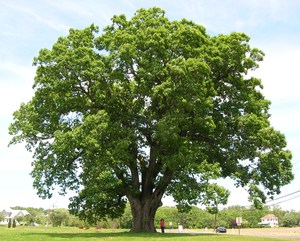
|
White Oak |
https://en.wikipedia.org/wiki/Quercus_alba
true
Slow
Dry, Moist
Full sun, Partial sun/shade
3-9
Tall trees
Hybrid oak
Medium, Heavy (clay)
Fagaceae
20.0
Seed
https://pfaf.org/User/Plant.aspx?LatinName=Quercus alba
Alabama, Arkansas, Connecticut, Delaware, Florida, Georgia, Illinois, Indiana, Iowa, Kansas, Kentucky, Louisiana, Maine, Maryland, Massachusetts, Michigan, Minnesota, Mississippi, Missouri, Nebraska, New Hampshire, New Jersey, New York, North Carolina, Ohio, Oklahoma, Ontario, Pennsylvania, Québec, Rhode I., South Carolina, Tennessee, Texas, Vermont, Virginia, West Virginia, Wisconsin
Leeward Is.
https://powo.science.kew.org/taxon/urn:lsid:ipni.org:names:295763-1
Coffee
Fire starter, Tannin, Lumber, Dynamic accumulator
|
Show
Edit |
|
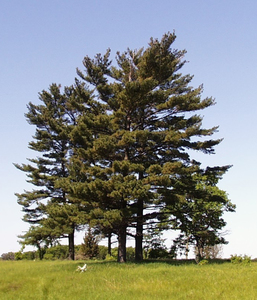
|
White Pine |
https://en.wikipedia.org/wiki/Pinus_strobus
true
Fast
Dry, Moist
Full sun
3-7
Tall trees
Eastern white pine
Light (sandy), Medium
Pinaceae
20.0
Flowers, Inner bark, Seed, Shoots
https://pfaf.org/User/Plant.aspx?LatinName=Pinus strobus
Alabama, Connecticut, Delaware, Georgia, Illinois, Indiana, Iowa, Kentucky, Maine, Manitoba, Maryland, Massachusetts, Michigan, Minnesota, New Brunswick, New Hampshire, New Jersey, New York, Newfoundland, North Carolina, Nova Scotia, Ohio, Ontario, Pennsylvania, Prince Edward I., Québec, Rhode I., South Carolina, Tennessee, Vermont, Virginia, West Virginia, Wisconsin
Austria, Belgium, Bulgaria, Central European Rus, Czechoslovakia, Denmark, France, Germany, Great Britain, Hungary, Ireland, Italy, Korea, Norway, Poland, Romania, Spain, Sweden, Switzerland, Turkey-in-Europe
https://powo.science.kew.org/taxon/urn:lsid:ipni.org:names:197100-2
Condiment, Drink, Gum, Tea
Dye, Gum, Herbicide, Pitch, Waterproofing, Lumber
|
Show
Edit |
|
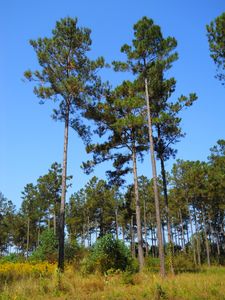
|
Loblolly Pine |
https://en.wikipedia.org/wiki/Pinus_taeda
Medium
Dry, Moist
Full sun
6-9
Tall trees
Light (sandy), Medium
Pinaceae
40.0
Weed potential
https://pfaf.org/User/Plant.aspx?LatinName=Pinus taeda
Alabama, Arkansas, Delaware, District of Columbia, Florida, Georgia, Kentucky, Louisiana, Maryland, Mississippi, North Carolina, Oklahoma, South Carolina, Tennessee, Texas, Virginia
Hawaii, Illinois, Korea, Mauritius, New South Wales, Queensland, Réunion
https://powo.science.kew.org/taxon/urn:lsid:ipni.org:names:263357-1
Condiment
Dye, Herbicide, Resin, Lumber
|
Show
Edit |
|
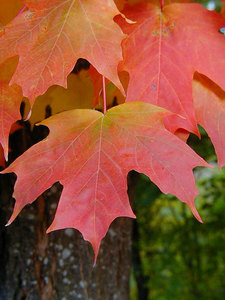
|
Sugar maple |
3-8
Perennial
Full sun, Partial sun/shade
Moist
Light (sandy), Medium, Heavy (clay)
Deciduous
30.0
Tall trees
Companion, Animal feed, Fire starter, Potash, Preservative, Lumber, Dynamic accumulator
true
Inner bark, Leaves, Sap, Seed
https://en.wikipedia.org/wiki/Acer_saccharum
Slow
Florida maple, hard maple, rock maple
Aceraceae
Zucker-ahorn
https://pfaf.org/User/Plant.aspx?LatinName=Acer saccharum
Alabama, Arkansas, Florida, Georgia, Illinois, Indiana, Iowa, Kansas, Kentucky, Louisiana, Maryland, Mexico Northeast, Michigan, Minnesota, Missouri, New York, North Carolina, Ontario, Pennsylvania, Québec, South Carolina, Tennessee, Texas, Vermont, West Virginia, Wisconsin
Korea, Poland
https://powo.science.kew.org/taxon/urn:lsid:ipni.org:names:56795-1
Sweetener
|
The sugar maple (Acer saccharum) is a deciduous tree native to the eastern and central United States and southeastern Canada. It is known for its distinctive five-lobed leaves and its production of maple syrup. In terms of appearance, the sugar maple has a rounded crown and a straight, sturdy trunk. Its leaves are typically 3-6 inches in size and have five lobes with serrated edges. The tree's flowers are small and green, and are followed by the production of winged seeds called samaras. In terms of size and growth rate, the sugar maple can grow to be quite large, reaching heights of up to 75 feet and widths of up to 50 feet. It has a moderate to fast growth rate, and can live for several hundred years. To differentiate the sugar maple from other species of maple, one can look for its distinctive five-lobed leaves and its winged seeds. Additionally, the bark of the sugar maple is smooth and gray when the tree is young, but becomes dark and deeply furrowed as the tree matures. In terms of growing conditions, the sugar maple prefers well-drained, moist soil and partial to full sunlight. It is adaptable to a range of soil types, but prefers slightly acidic soil. To cultivate the sugar maple successfully, a grower may need to provide regular watering and mulching, as well as protection from strong winds. The sugar maple is winter hardy and can withstand cold temperatures. The sugar maple is edible, and its sap can be collected and boiled down to produce maple syrup. The tree's leaves, seeds, and bark can also be used for medicinal purposes. In terms of its value for wildlife, the sugar maple provides food and shelter for a variety of species. Its seeds are eaten by birds and small mammals, and its leaves provide food for caterpillars. The tree's sturdy branches provide perches for birds and its dense canopy offers protection from the elements. |
Show
Edit |
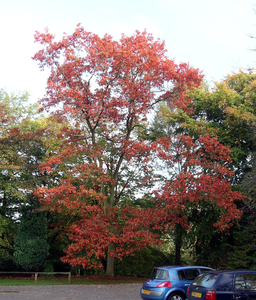
|
Red Oak |
3-7
Full sun, Partial sun/shade
Dry, Moist
Medium, Heavy (clay)
25.0
Tall trees
true
Seed
https://en.wikipedia.org/wiki/Quercus_rubra
Fast
Northern red oak
Fagaceae
https://pfaf.org/User/Plant.aspx?LatinName=Quercus rubra
Alabama, Arkansas, Connecticut, Delaware, District of Columbia, Georgia, Illinois, Indiana, Iowa, Kansas, Kentucky, Louisiana, Maine, Maryland, Massachusetts, Michigan, Minnesota, Mississippi, Missouri, Nebraska, New Brunswick, New Hampshire, New Jersey, New York, North Carolina, Nova Scotia, Ohio, Oklahoma, Ontario, Pennsylvania, Prince Edward I., Québec, Rhode I., South Carolina, Tennessee, Vermont, Virginia, West Virginia, Wisconsin
Austria, Belgium, Bulgaria, Czechoslovakia, Denmark, France, Germany, Greece, Hungary, Italy, Krym, Netherlands, New Zealand North, New Zealand South, Norway, Poland, Portugal, Romania, Sardegna, Spain, Sweden, Switzerland, Ukraine
https://powo.science.kew.org/taxon/urn:lsid:ipni.org:names:296701-1
Coffee
Dye, Tannin, Lumber, Dynamic accumulator
|
Red oak is a large deciduous tree that is native to eastern and central North America. It typically grows to be between 60 and 80 feet tall and can live for several hundred years. The leaves of the red oak are alternate, simple, and lobed, with 7-11 lobes per leaf. The leaves are bright green in the summer and turn red, orange, and yellow in the fall. The bark of the red oak is dark gray and deeply furrowed. The tree produces small, yellow-green flowers in the spring, followed by acorns that mature in the fall. Red oak prefers well-drained, moist soil and full sun. It can tolerate a wide range of soil pH levels, but it prefers slightly acidic soil. In order to cultivate red oak successfully, a grower may need to provide adequate moisture and sunlight and protect the tree from strong winds. Red oak is winter hardy and can withstand cold temperatures. The acorns of the red oak are edible and were an important food source for Native American tribes. They can be collected in the fall and stored for later use. The acorns can be roasted and ground into a flour, which can be used to make bread or other baked goods. The wood of the red oak is strong and durable and is commonly used for furniture, flooring, and other wood products. Red oak is valuable to wildlife as a source of food and shelter. The tree provides acorns for birds and small mammals, and the leaves provide food for caterpillars, which are an important food source for many species of birds. The tree also provides nesting sites for many species of birds and other animals. |
Show
Edit |